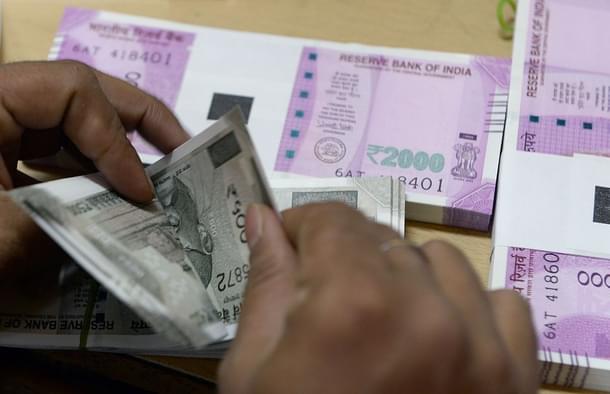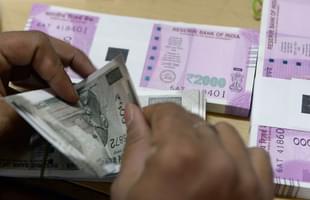Economy
Tonnes Of Data, Ounce Of Insight: Why We Will Never Know If DeMo Worked
R Jagannathan
Dec 26, 2016, 11:37 AM | Updated 11:31 AM IST
Save & read from anywhere!
Bookmark stories for easy access on any device or the Swarajya app.


Esther Duflo, economics professor at MIT and co-author along with Abhijit Banerjee of the insightful book Poor Economics: Rethinking Poverty and Ways to End It, is apparently no fan of India’s demonetisation. She believes, not without reason, that the move was unleashed without paying adequate attention to implementation issues, and that “we might never know” how this shock will impact poverty alleviation in India “because there is no effective mechanism to measure GDP creation in the informal economy”. She told Mint newspaper in an interview, “We might never know the exact magnitude of loss.”
She is, of course, right. India is very poor at data, both in its collection and in its accuracy. But the surprising thing is even this needs to be said. While Duflo may worry about not being able to calculate the magnitude of loss, this can equally be said about the long-term gains that might accrue from this shock treatment for the economy. Even assuming a group of microeconomists and macroeconomists collectively scour enough data from the November 2016 to March 2017 period – which is likely to be the immediate impact period of demonetisation – it is unlikely that they will come up with anything more useful than there was loss and there was gain, and we don’t know which bit outweighed the other.
The point is simple: a huge macro measure like demonetisation will have multiple systemic impacts, and its success or failure will depend on how people respond to the shock. There cannot be any simple measure of loss or gain. There will be both gains and losses, and almost anyone can cherrypick data to prove his point.
Consider what we now count as loss: these could include business loss, tax revenue loss, informal jobs and income losses, man-hours lost in bank queues, etc. The gains could include the drop in interest rates for borrowers and the treasury gains for banks from lower yields. There could also be revenue gains by the forced expansion of the tax base, as most demonetised currency comes back into banks.
But here’s the rub: what if business is not lost forever, but only postponed? What if the interest drop is transient? What if banks see a rise in non-performing assets (NPAs), but the profit rise covers this? Sometimes, the medium term gain or loss may cancel out today’s short-term loss or gain. How do we ever get to know if the effort was worth it? It is going to remain a free-for-all, with political bias being the dominant determinant of projected gain or loss.
Duflo talks about poor data about the informal sector, but we should also worry about the data that we do get, especially in the short term.
As I wrote in another article last week, any economist who claims he knows what will happen is probably bluffing.
Consider one data point we already have: prices. While the consumer prices index (CPI) came in at a record low of 3.63 per cent in November, can anyone say this was due to demonetisation’s impact on demand and not the sharp fall in food inflation post a good monsoon? Perhaps after a long time, but not now, when the impact of two different forces on prices cannot be separated.
Around mid-January, we will get the Index of Industrial Production (IIP) data for November, which will show how sharply demonetisation has impacted factory output. But with October already reporting a 1.9 per cent drop in IIP, how will we know if November is merely following the established trend and not specifically responding to demonetisation?
Or take gross domestic product (GDP). Everyone has assumed that GDP will take a sharp hit in the current quarter and also the next (ending March 2017). But Pronab Sen, the government’s former chief statistician, told Business Standard that he expects no impact on third quarter GDP growth, since “agriculture will do well” and this output is measured in terms of quantity. “Also, people (ie, farmers) will manage their transactions for one-and-a-half months somehow through their savings, which is the period of demonetisation in the quarter.” So there may be no doom on the farm front for all we know.
Also consider the tax data currently at hand. Business Standard reports that advance tax receipts (due 15 December) from the top 43 taxpayers show a decent 10.1 per cent growth, despite the knocks taken by the consumer goods and automobiles sectors. The losses on these fronts have been made up by higher earnings in the petroleum sector and banks. In the next quarter, the figures could well reverse, as the rush for using old notes at petrol outlets reduces, and consumer industries pick up after a slack third quarter.
Or consider the likelihood of other macroeconomic data making much sense in the short run. Thanks to demonetisation, banks have seen a huge surge in deposits. Given the slower pace of remonetisation and withdrawals against these deposits, fiscal 2016-17 may well see an abnormal spike in the savings rate, currently hovering around 30-31 per cent. Will this forced saving help interest rates fall and see a revival in investment in 2017-18? We can’t know now.
And then there is the question of how the huge deposit inflows from black cash get reported in the national GDP data. Have companies with lots of cash reported higher earnings from sales despite an actual drop due to demonetisation? Will backdated sales data, which tends to get fed into the ministry of company affairs’ database from which gross value added (GVA) is computed, show a sudden spike in some black money-prone sectors?
The truth is we can’t know what has actually happened due to demonetisation from the early data that’s begun to come in. Even the next quarter, for which data will come only by May 2017, will not bring clarity to how the cash crunch has affected economic behaviour.
The chances are government will choose to see one set of data if they look good and the opposition another set. Economists should not jump to conclusions for at least the next four quarters.
Demonetisation is a perfect example of living in a data-rich but fact-free reality. Both critics and supporters of demonetisation will get to pick and choose their data.
(Parts of this article were earlier published in Dainik Bhaskar’s English publication).
Jagannathan is former Editorial Director, Swarajya. He tweets at @TheJaggi.





